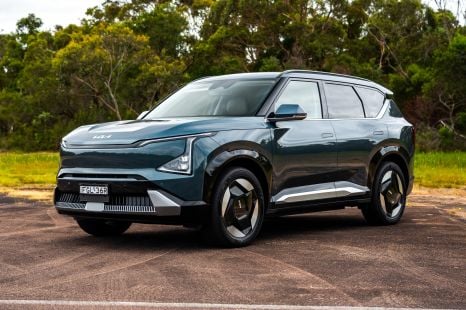

James Wong
2025 Kia EV5 Earth AWD review
27 Days Ago

News Editor
Hyundai has released more details on the second generation of its hot-selling Kona small crossover SUV, which will be a bigger car this time around.
The SX2-series Kona will offer a choice of petrol, hybrid and electric powertrains, with Australia to receive all three types. This marks the first time Hyundai will offer a hybrid Kona locally.
Petrol models will arrive mid-year, with the hybrid and electric models due in the fourth quarter of 2023.
Hyundai says it will release more details about the Kona for global markets – including the electric variant – in March.
Sporty N Line versions will be available with the petrol, hybrid and electric powertrains, though Hyundai Australia hasn’t confirmed local specification details yet.

Hyundai has detailed the Korean-market powertrain line-up, which opens with a naturally aspirated 2.0-litre four-cylinder engine producing 110kW of power and 179.5Nm of torque. This is mated with Hyundai’s Intelligent Variable Transmission (IVT).
This base powertrain appears to be carried over from the existing car.
There’s an available turbocharged 1.6-litre four-cylinder engine with 146kW and 265Nm which now uses an eight-speed automatic instead of a seven-speed dual-clutch.
Finally, the Kona HEV pairs a 1.6-litre four-cylinder engine with a six-speed dual-clutch automatic and an electric motor, for total system outputs of 104kW and 265Nm – the same outputs as in the Kia Niro HEV.
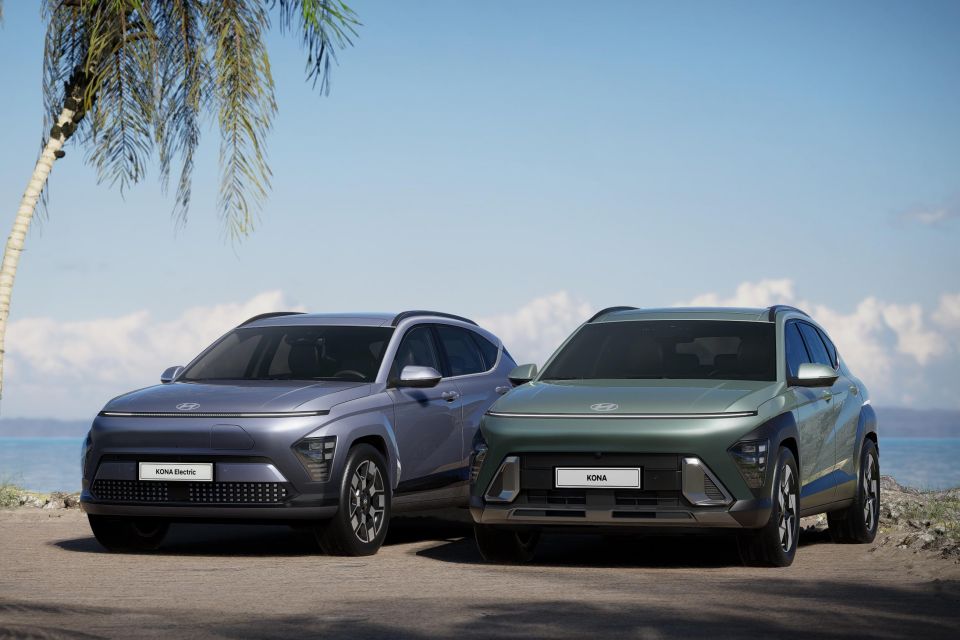
There will be a full complement of safety features available, depending on the variant. This includes:
Hyundai will also make available its Remote Smart Parking Assist, which allows you to move the vehicle using the key fob.
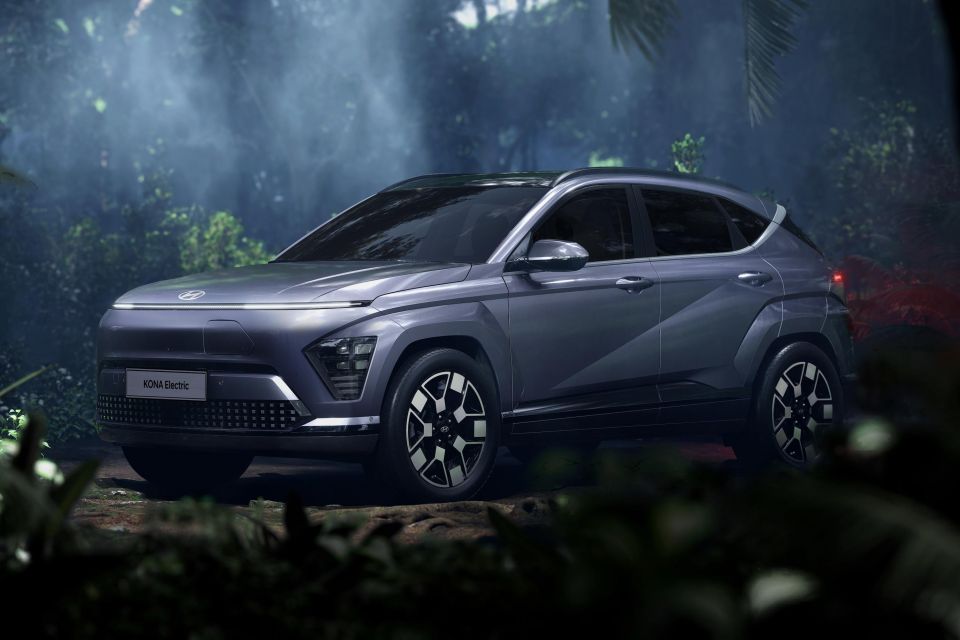
The company says in developing the second-generation Kona, it started with the electric version first.
It’s noticeably larger than the outgoing model, measuring 4355mm long, 1825mm wide, 1580mm tall (on 17-inch tyres), and riding a 2660mm wheelbase.
That makes it 150mm longer and 25mm wider on a 60mm longer wheelbase, and blows it up to near-Kia Seltos proportions. Its corporate cousin measures 4385mm long, 1800mm wide, and up to 1635mm tall, with a 2630mm wheelbase.
The technology-led design – as Hyundai calls it – sees the Kona take a robotic-like aesthetic with prominent LED light bars front and rear.
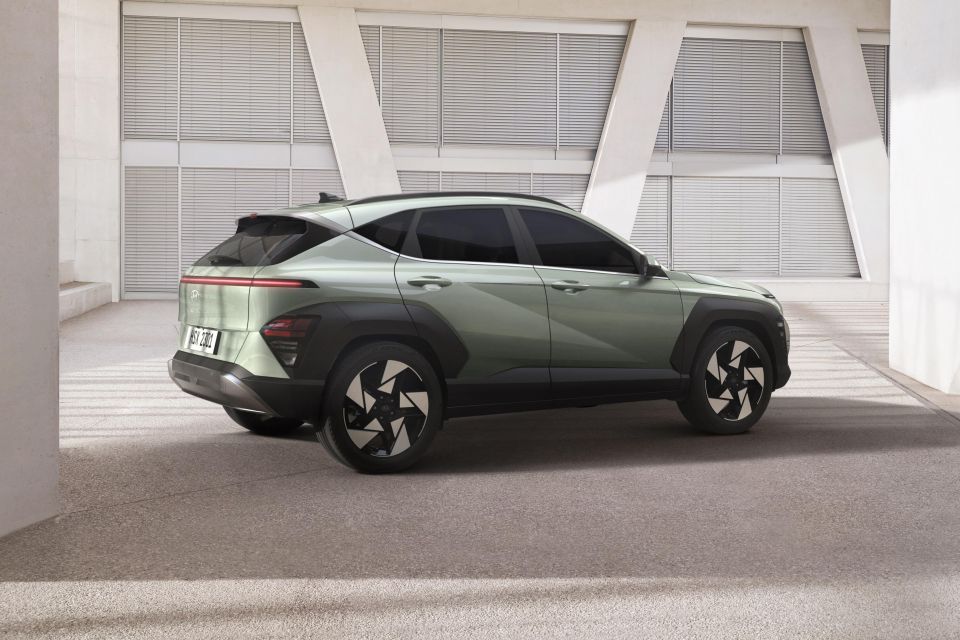
Said LED light bars are what Hyundai calls a Seamless Horizon Lamp, which in the EV version is pixelated which apparently “adds to the EV’s distinctive character”. As with the original, there’s sculpted wheel arch cladding, as well as split headlight and tail light designs.
Between powertrain variants there are various styling differences: Kona EV models get pixel graphic details and pixel-inspired 19-inch alloys; ICE and HEV versions have a more rugged look with SUV-style bumper and skid plate designs as well as black cladding; and the N Line gets more aggressive front and rear-end styling and an optional black roof.
Hybrid models get upper and lower active air flaps to improve aerodynamic performance and lend an “EV-like appearance”, while petrol models forego the lower flaps.
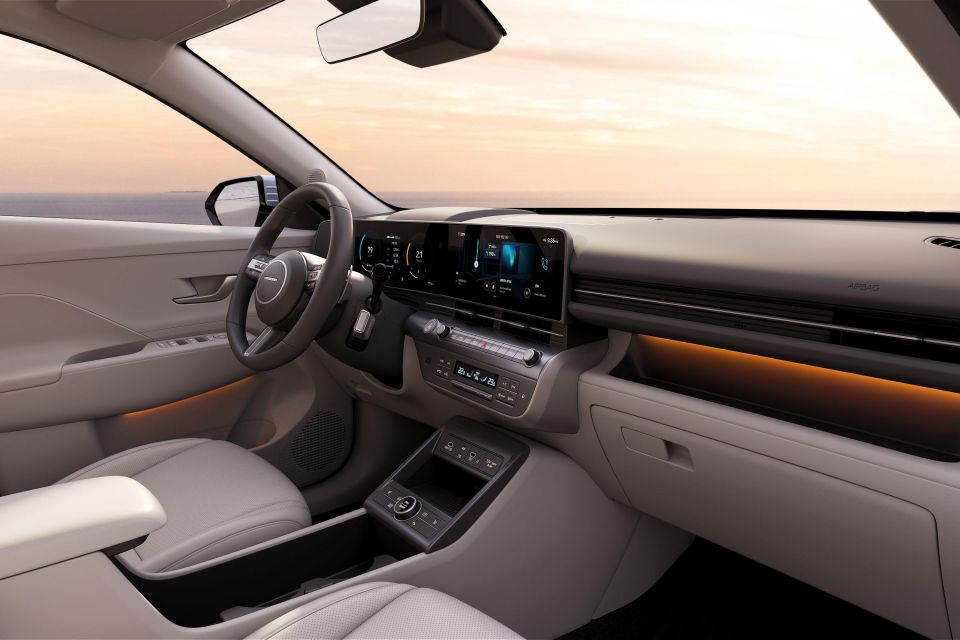
Inside, the new Kona’s interior takes inspiration from other Hyundai EVs like the Ioniq 5 and includes dual 12.3-inch widescreen displays.
Over-the-air software updates are available for the in-car tech, with even the ambient lighting supported by OTA updates for both maintenance and new features.
There’s a “floating horizontal C-Pad” to emphasise the “slim and wide interior”, while a column-type shift-by-wire drive selector opens up storage space in the centre console.
The N Line also uniquely offers metal pedals and an N-branded gear shifter. Optional on the Kona are front-row “relaxation comfort” seats designed to alleviate fatigue after long-haul driving.
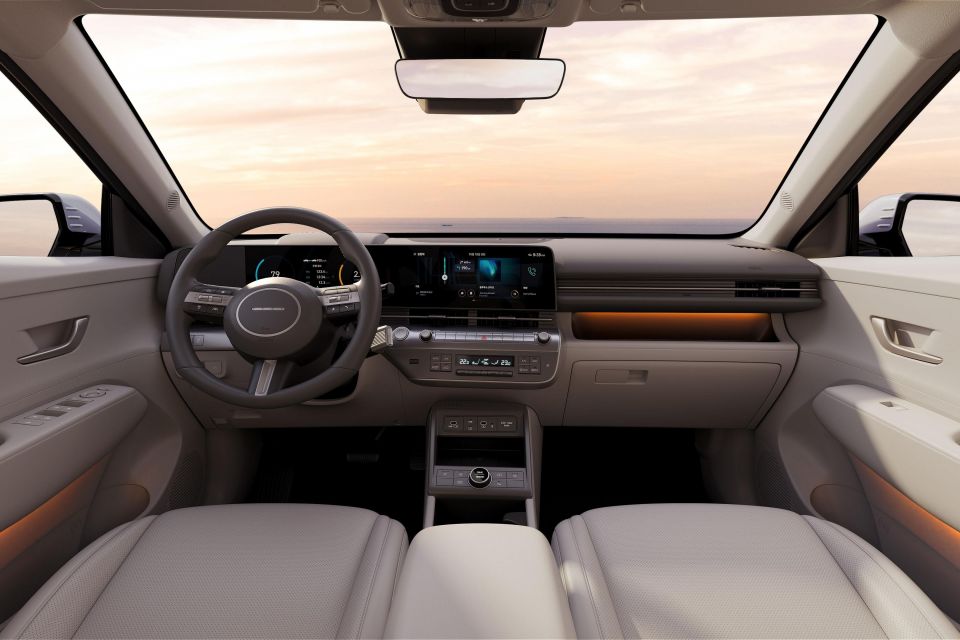
Hyundai says legroom has been increased by 77mm in the rear of the cabin, while second-row headroom is up by 11mm.
Shoulder room is 1402mm, which Hyundai claims is best in class; the company also notes its “slim and rigid seats”, measuring only 85mm thick, which add more space for second-row passengers.
Hyundai also claims the fully foldable second-row seat and rear compartment provide up to 723L of cargo space, though this is based on the SAE system of measurement. A hands-free power tailgate is optional.
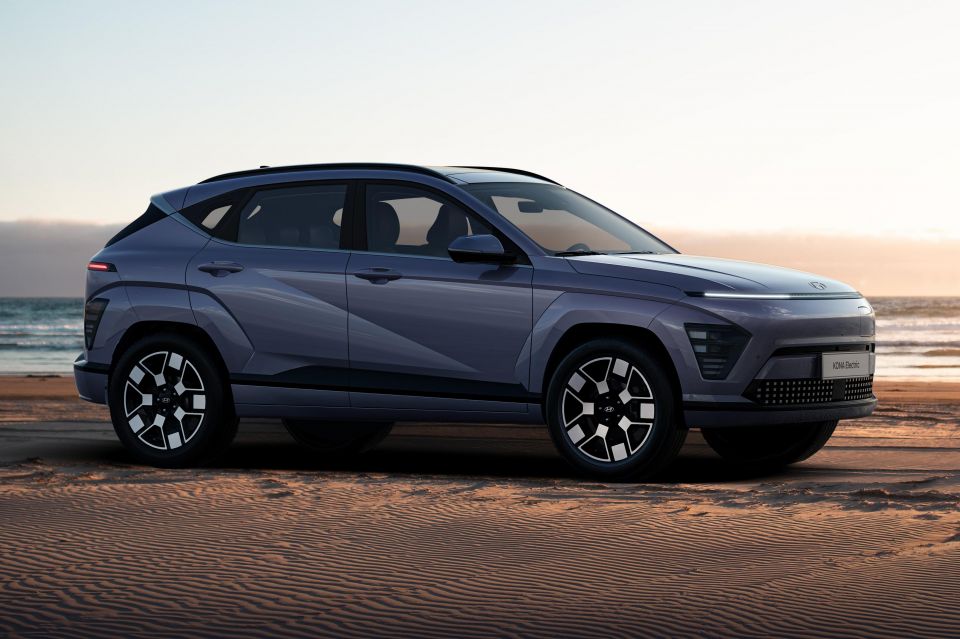
Digital Key 2 Touch accessibility is available, which uses near-field communication to allow you to lock, unlock or start the Kona using either a smartphone or smart watch.
Given Hyundai has said it will reveal more information on the Kona in March, it could be looking to do a full reveal of the crossover at the Seoul Mobility Show which will run from March 30 to April 9.
The current Kona may be at the very end of its lifecycle, but it was still Hyundai’s third best-selling model in 2022 and the fourth best-selling vehicle in the hotly competitive small SUV segment with 11,538 sales.
It was bested only by the Mitsubishi ASX (12,753), Mazda CX-30 (13,891) and MG ZS (22,466). Of those, only the MG also offers a choice of petrol and electric powertrains.
MORE: Everything Hyundai Kona
Where expert car reviews meet expert car buying – CarExpert gives you trusted advice, personalised service and real savings on your next new car.
William Stopford is an automotive journalist based in Brisbane, Australia. William is a Business/Journalism graduate from the Queensland University of Technology who loves to travel, briefly lived in the US, and has a particular interest in the American car industry.


James Wong
27 Days Ago


CarExpert.com.au
20 Days Ago


Andrew Maclean
17 Days Ago


Paul Maric
10 Days Ago


Max Davies
8 Days Ago


William Stopford
4 Days Ago